Affiliate links on Android Authority may earn us a commission. Learn more.
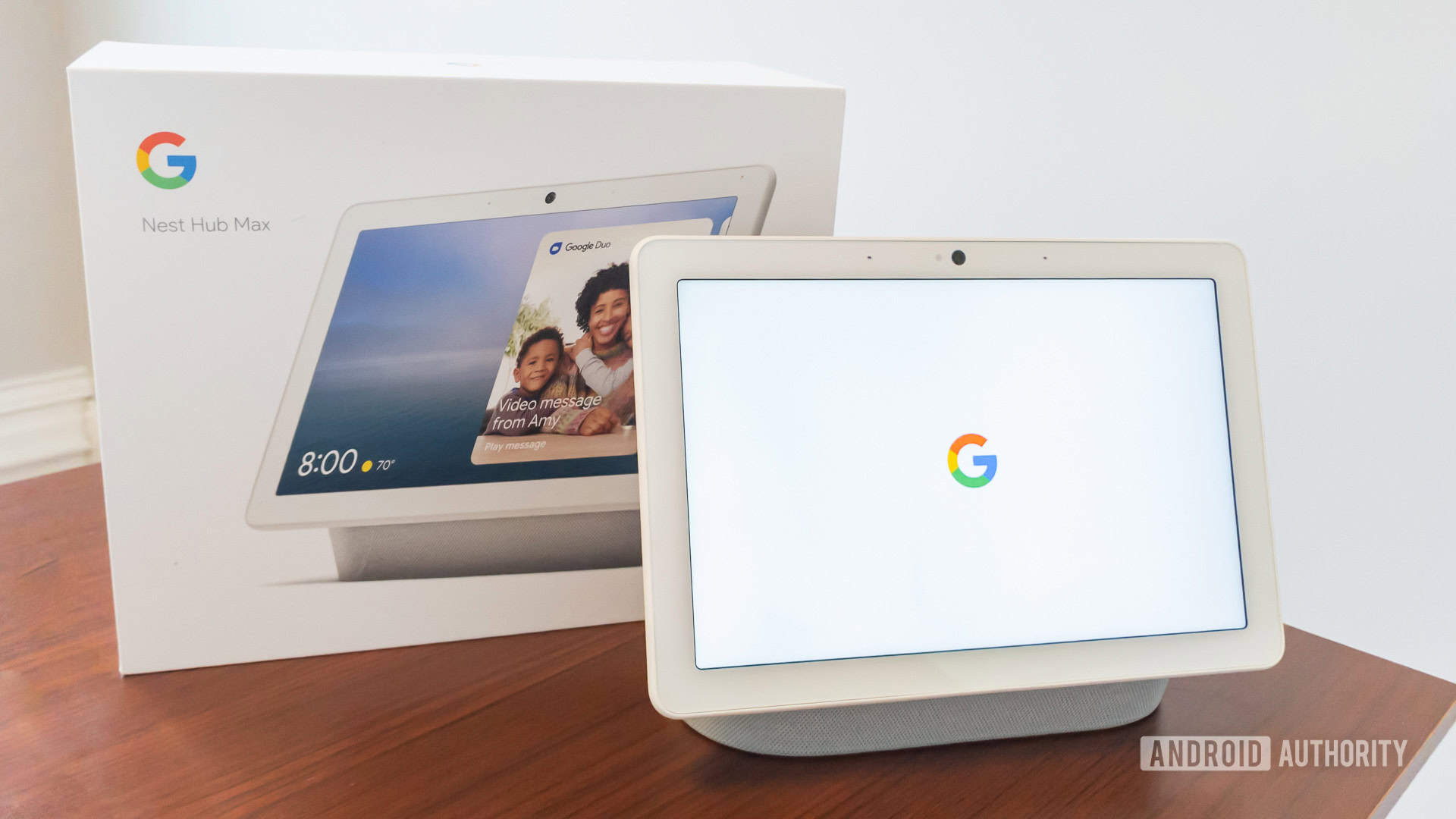

Google Nest Hub Max review: Not the cheapest, but the best
Published onOctober 24, 2024

Google Nest Hub Max
What we like
What we don't like

Google Nest Hub Max
In late 2019 Google released the Nest Hub Max, the first product from its new Google Nest co-brand. Google’s biggest smart display looked nearly identical to the Nest Hub but added new functionality, including a camera, a larger display, and some Nest Cam DNA. When it launched, the Google Nest Hub Max packed many features and firsts for the budding smart display market.
A little over four years later, is it still enough to make the display a must-have for your smart home? Find out in Android Authority‘s Google Nest Hub Max review!
Update, October 2024: We’ve updated this review with some minor changes to keep it up-to-date and accurate.
Google Nest Hub Max review: The big picture
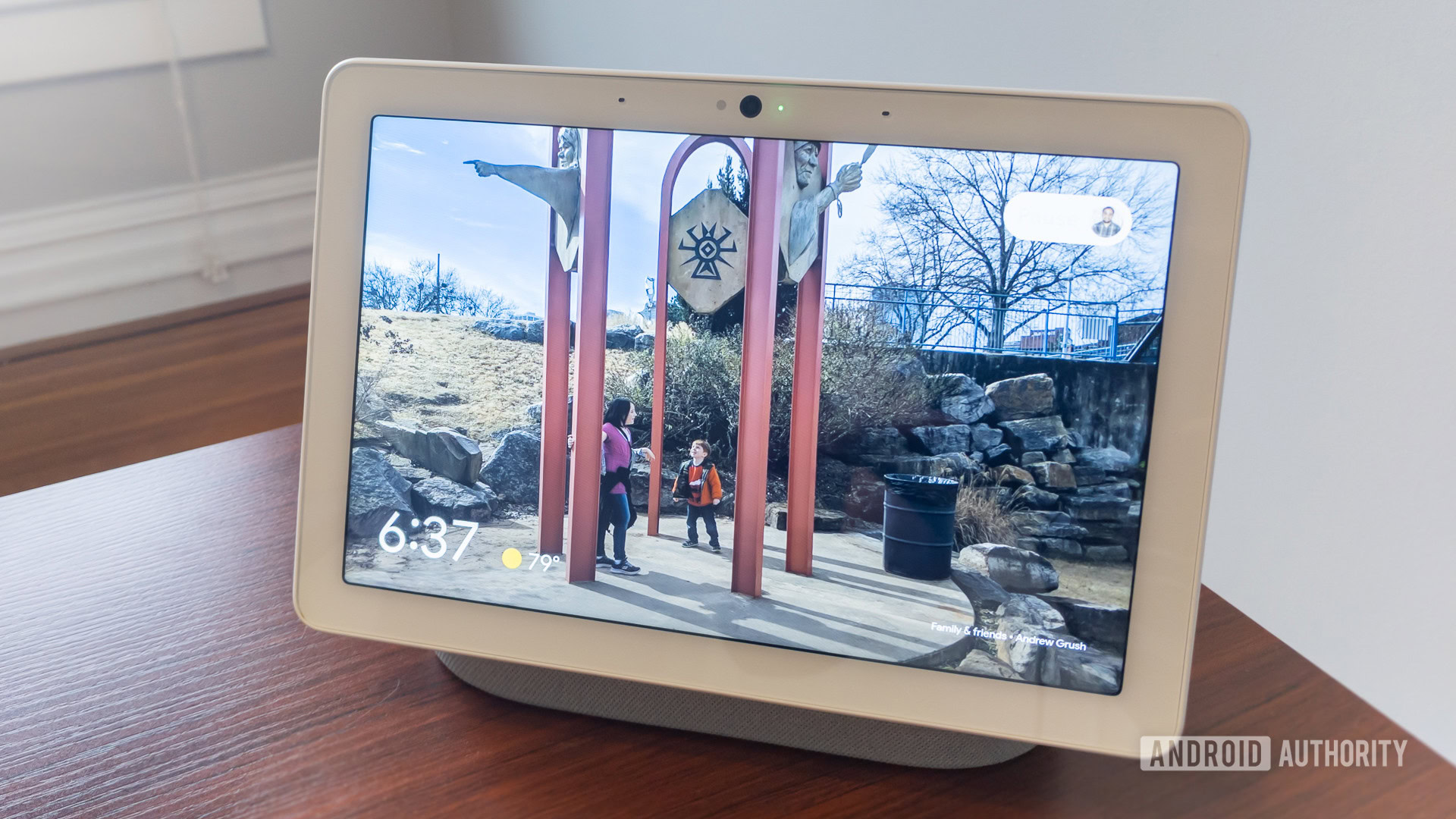
The Google Nest Hub Max was the first of many products under the Google Nest branding. Despite being several years old, it remains Google’s top-tier option with extras you won’t find from the newer-gen Nest Hub like a bigger display, security camera features, and video calling.
While it was originally priced at $229 it has often gone on sale for much less, though in the last few months, this has occurred with less frequency. On the flip side, the smaller Nest Hub does nearly everything else as the Max, but at a fraction of the price. You can find the Nest Hub for just $100 in 2024 and sometimes for even a little less on sale.
Design
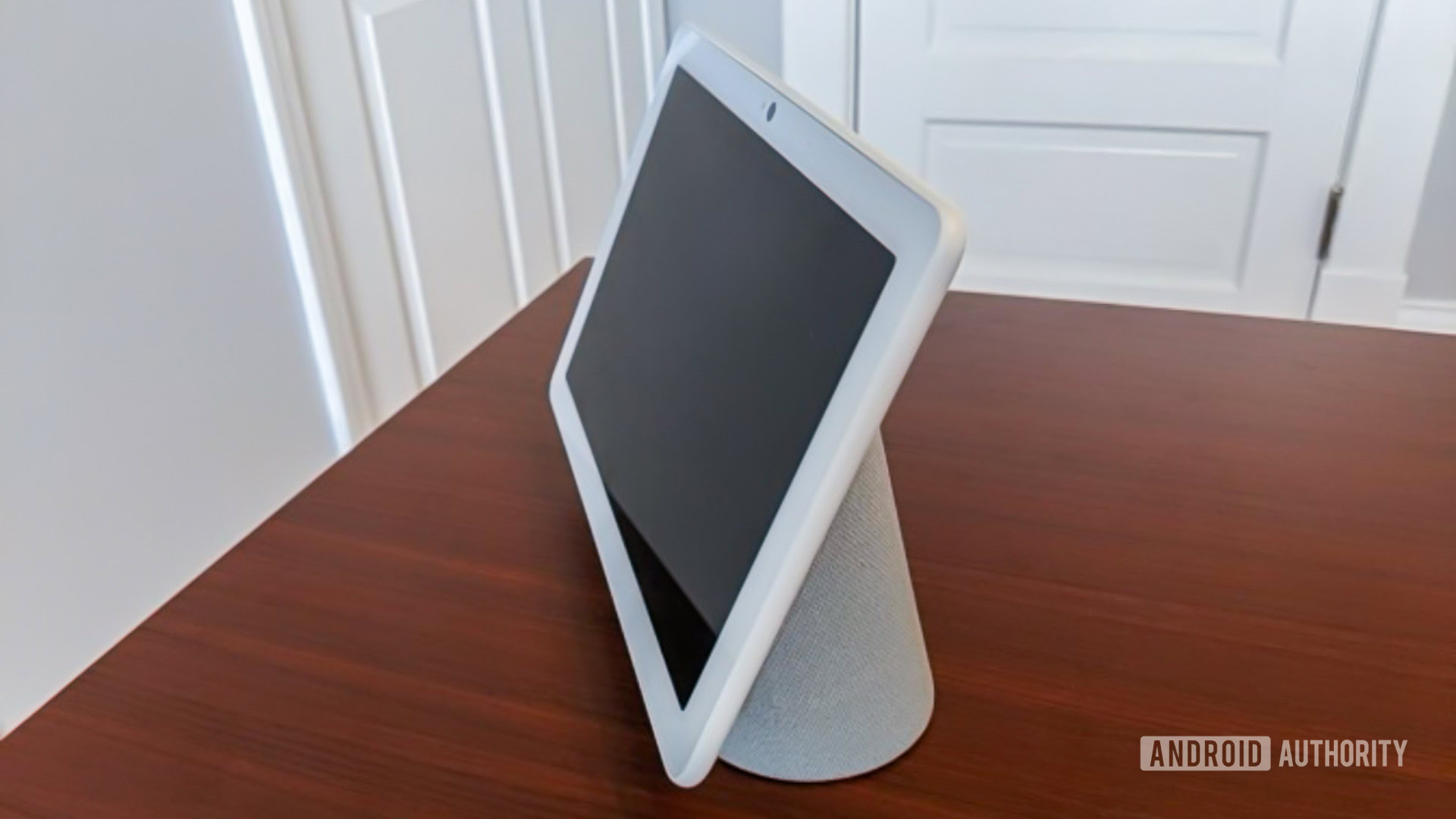
The Nest Hub Max inherits the slanted, tablet-like design and fabric speaker covers found on its older brother. It even offers the same pastel color scheme in your choice of chalk or charcoal. The minimalist design has only two physical buttons — a volume rocker and a mute switch that kills both the camera and mics. Both keys are found on the rear of the device.
Keeping the Hub Max’s design uniform with the original makes sense, but we wish there was a physical slider for the camera instead of simply pairing it with the mute switch. It is possible to disable just the camera, but you’ll have to do it from the touchscreen. The Google Nest Hub Max is built around simplicity. The design might not be what we call gorgeous, but it is convenient and blends well with other members of the Google Home/Nest family.
Display and other hardware
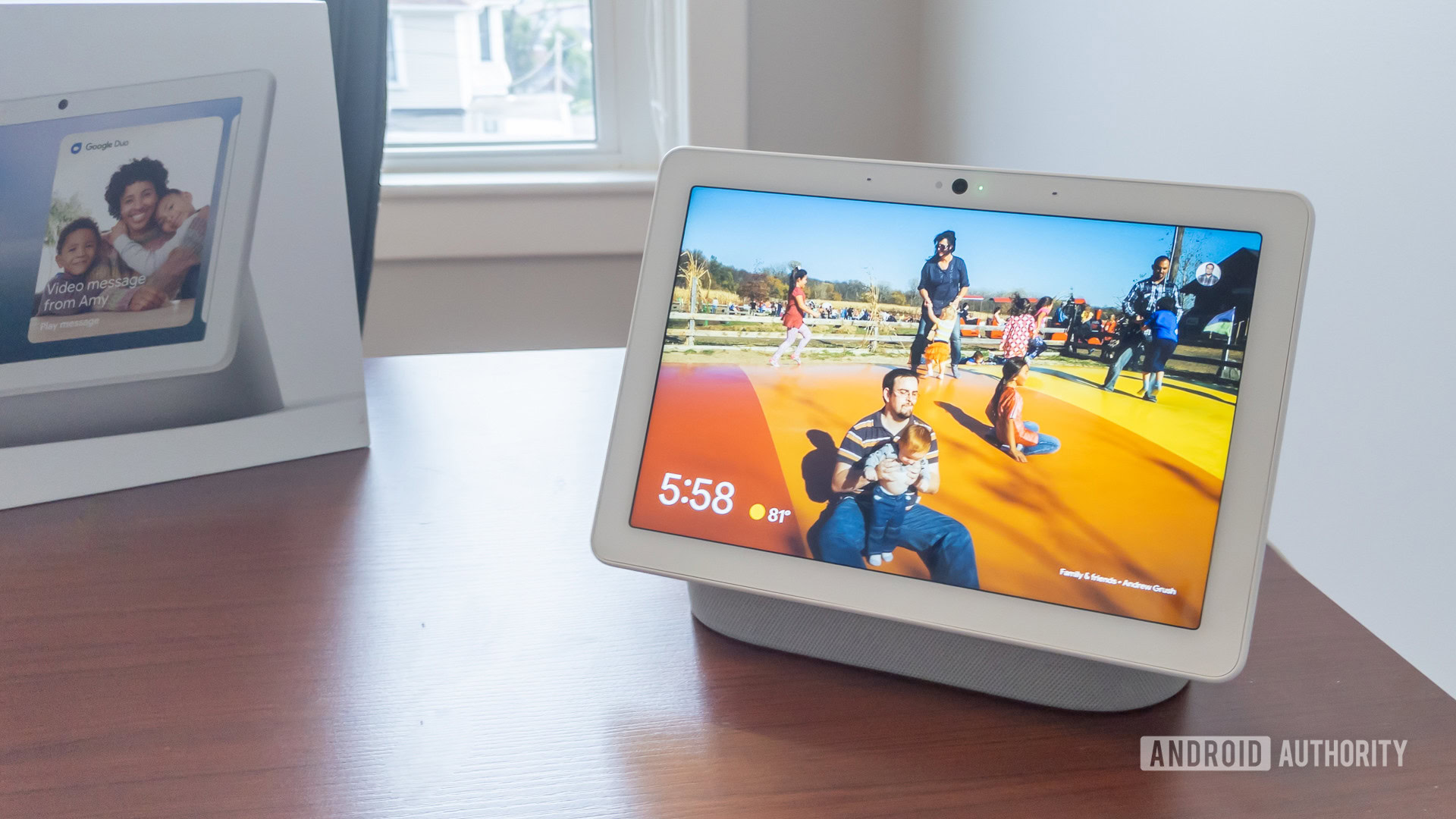
The Google Nest Hub Max features a larger 10-inch panel compared to the 7-inch display on the standard Hub. Unfortunately, the resolution isn’t quite as high as we would have liked at just 1,280 x 800 with a 16:10 aspect ratio.
The display is big and sharp for viewing pictures and moving through the UI, but it’s not quite as good for video consumption. We wouldn’t say the display is terrible, only that having a higher resolution would have been a nice touch. Then again, this is mainly used for passive watching in the kitchen, so not everyone will care.
On a brighter note (literally), the Nest Hub Max features Ambient EQ technology that lets it dynamically adjust the color temperature and brightness of the display. The result is easy viewing, even in extremely well-lit locations, such as by a window. The display also lowers brightness at night, dimming it to show only a black background with a clock.
A larger display isn’t the only noticeable improvement to the Hub Max. The newly added camera is easily the biggest stand-out of the device. While we’ve seen smart displays with cameras before, the Nest Hub Max adds more than just video calls. We’ll discuss this a bit later in our Nest Hub Max review.
The Google Nest Hub Max arguably has the best sound quality from a smart display so far.
The Google Nest Hub Max features a stereo speaker system comprised of two 18mm 10W tweeters and a 75mm subwoofer, as well as far-field mics for picking up your voice. It probably isn’t going to win over audiophiles, though we found the speaker quality above average for a smart display.
The Hub Max certainly is louder and has much better clarity than the classic Google Home speaker. In most scenarios, we also found that the sound quality was arguably better than the JBL Link View, though the latter is perhaps better for bass-heavy tracks.
For my taste, I say that the Nest Hub Max makes for a wonderful alternative to buying a speaker. This won’t hold true for everyone, and I won’t deny high-end dedicated speakers will offer a better experience. You won’t find a better smart display speaker, though, even if the JBL Link View comes reasonably close.
Google Nest Hub Max: Setting up and making the most of new features
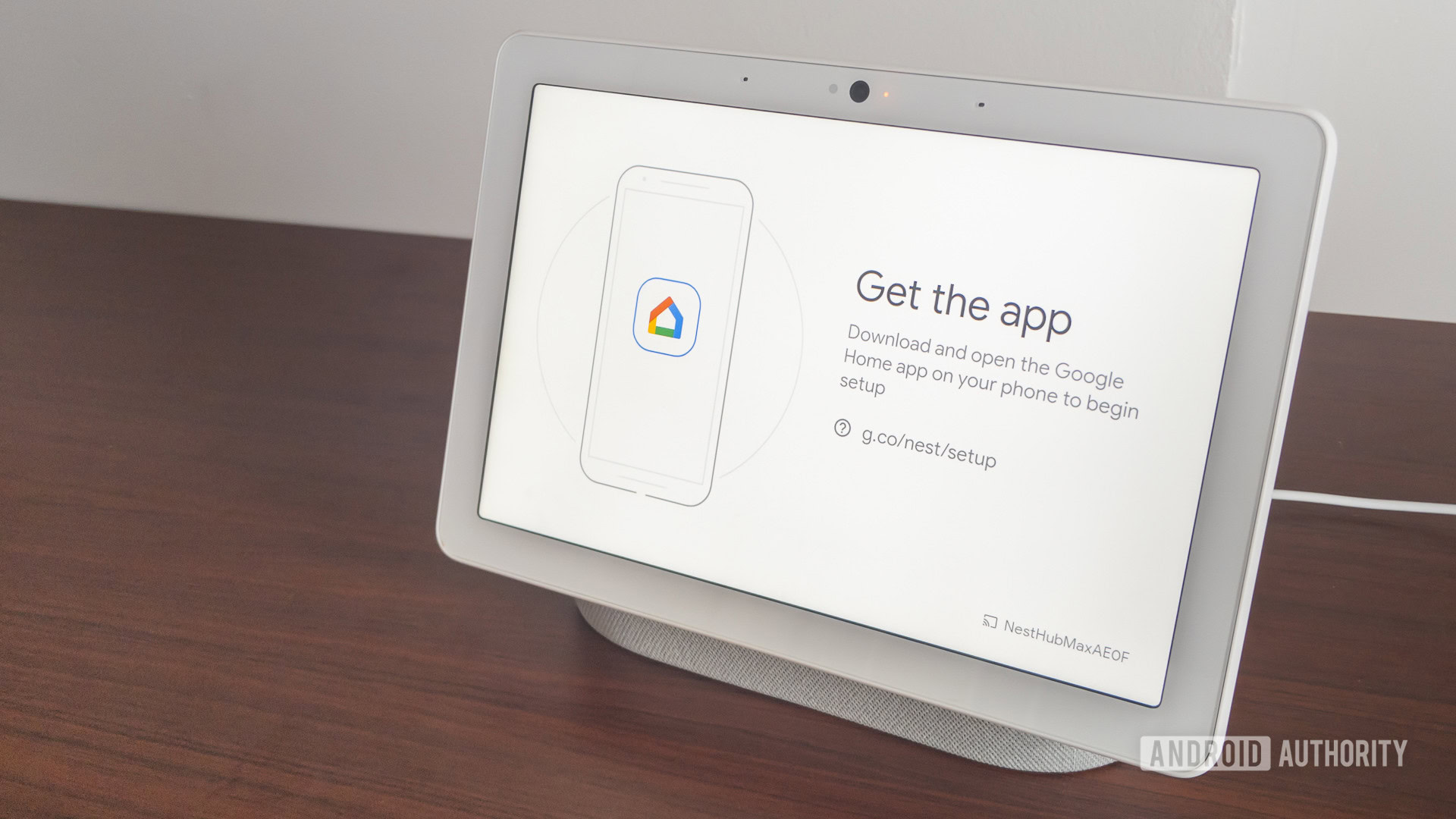
Google smart speakers and displays are typically very easy to set up, which remains mostly true for the Google Nest Hub Max.
The Hub Max’s display will light up on the first boot and ask you to get the phone app. Jumping into the Home app, we were immediately prompted to set up a new device. From there, it was just a matter of following on-screen prompts.
During this process, you’ll be asked if you want to set up extras like camera sensing, voice match, face match, Duo calling, and Ambient Mode. Most of these features are optional, but we highly recommend setting it all up if you want to make the most of your new smart display.
Many of these features aren’t new or exclusive to the Google Nest Hub Max so we won’t go into much detail. Still, a few unique Google Nest Hub Max features are worth highlighting.
Camera sensing technology
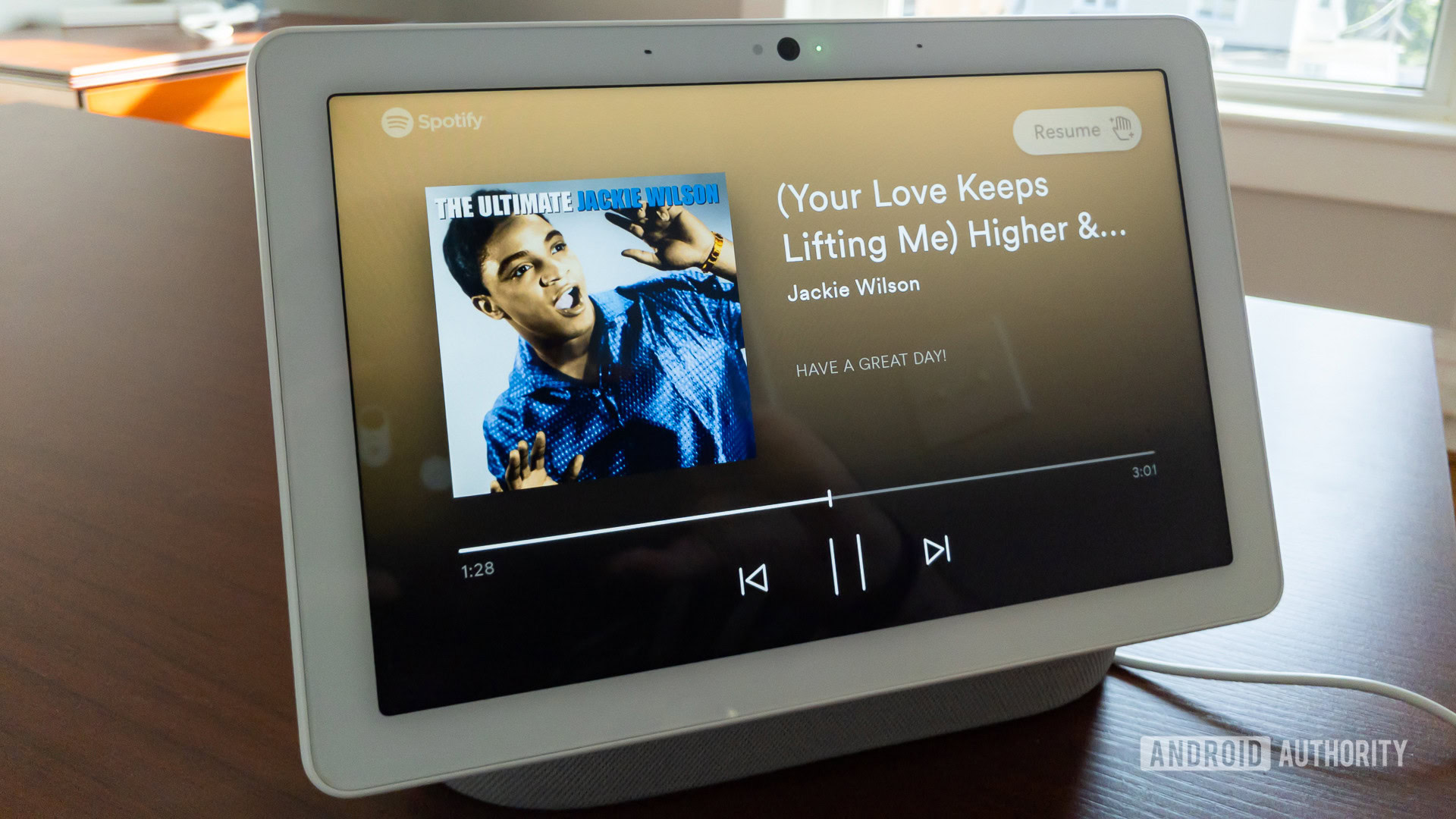
With this feature, you don’t need to touch or speak to the Google Nest Hub Max if you want to dismiss a timer or pause a song.
Simply raise your hand, and it’ll pause or end the timer. Repeating the same gesture will unpause any media playing. This is helpful in loud environments or if your hands are full or dirty — great for those who use the display while cooking.
I placed the Google Nest Hub Max in our kitchen for part of the review period and let my family interact with it. My wife and I agreed that the gestures were a super useful addition, probably because our house is always chaotically noisy, thanks to three kids. We also found the feature extremely reliable. My two-year-old struggled to get it to work half the time, but that’s more of a user (and height) error than a real problem.
Face match technology
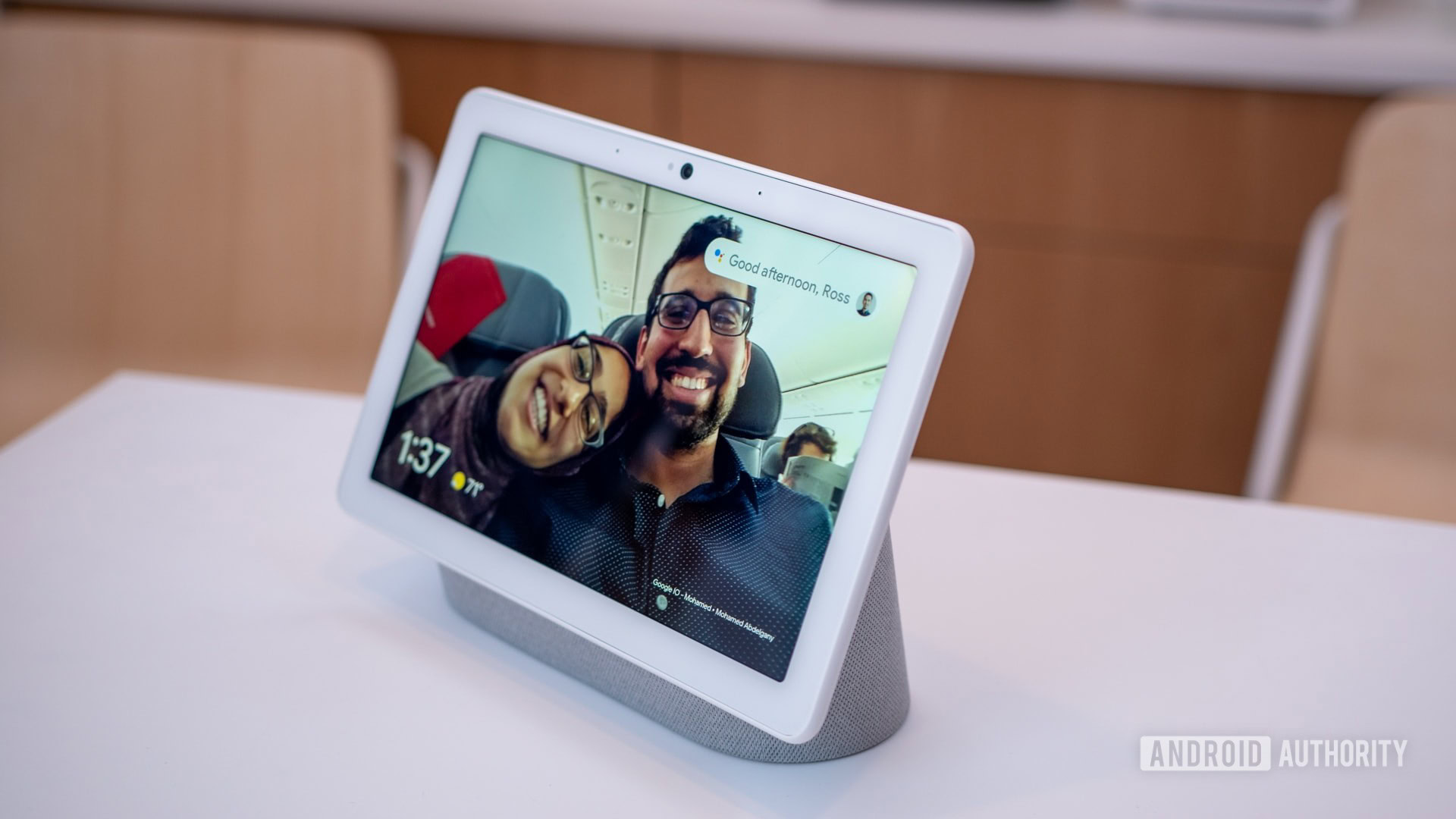
The concept here is identical to voice match, only that it identifies your face instead of your voice to provide personalized information. With this feature enabled, you’ll get user-specific info like calendar reminders, messages, and even music/video recommendations. You can also ask Google Assistant to create reminders for other household members, like asking them to get groceries or pick up the kids from school.
In our testing, my wife and I set up a profile and found it worked as advertised. We also never had any situations where it didn’t recognize us or thought we were someone else, which is more than I can say for Google Assistant’s voice match (which occasionally has some hiccups in our household).
Improved video calling via Google Duo
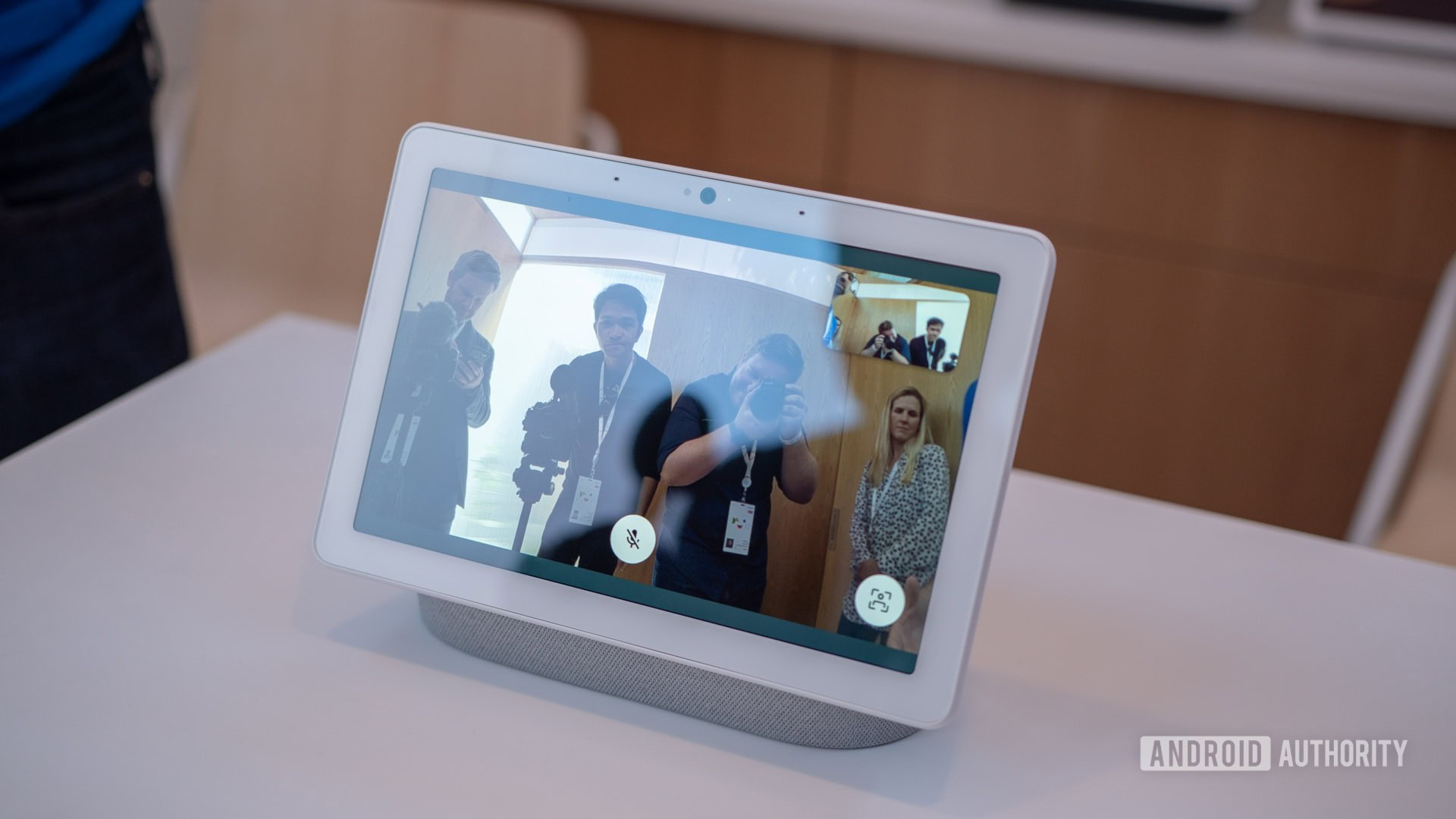
Devices like the JBL Link View and Lenovo Smart Display already featured video calling using Google Duo and so have many newer smart hubs. Still, the Google Nest Hub Max takes things a step further thanks to the 127-degree field-of-view camera that provides super-wide video. It also uses auto-framing technology, so if you move around in front of the camera, it will move around to help keep you in the shot. This is particularly useful if you’re moving around the kitchen or if a child is talking to a grandparent but won’t hold still.
We placed a few video calls during our testing and played around with the tracking. It all worked pretty seamlessly.
We also tested the ability to send quick messages to the Google Nest Hub Max from within the Duo app (which has since merged with Google Meet). Once you record and send a message, it’ll show up on the home screen as a virtual sticky note, perfect if you want to send a quick check-in message to your roommates or family members.
We do lament the fact that only Google Duo is supported for video calling, but we imagine Google’s main objective was to keep things simple so that way even less tech-savvy users can jump right into placing video calls. The fact Google is desperately trying to get folks to use its latest video app also likely plays a pretty significant role. With the news, Google Assistant now supports Whatsapp on the phone; perhaps we could eventually see more options on Hub Max too?
Interestingly the Nest Cam features aren’t part of the initial setup, but Google does alert you about the features’ existence via a card on the home screen. To set up the Nest Cam, you’ll need to head into the Google Home app. From there, follow the on-screen prompts.
Look and talk lets you rest your voice a bit
In May of 2022, Google introduced a new feature to the Google Hub Max called Look and Talk. Essentially the feature locks in your gaze to trigger the assistant, giving you an alternative to saying, “Ok, Google.” In situations where you’re close to the display, this makes a lot of sense and gives you yet another way to interact with Google Hub Max.
Google Nest Hub Max now supports Matter
Matter is one of the biggest developments in the smart home space in recent years. This new protocol lets your smart devices more seamlessly connect to your smart speakers, displays, Amazon Alexa, Samsung SmartThings, or Apple HomeKit. The whole idea is to make setting up and controlling a smart home something anyone can do instead of just techie enthusiasts like in the earlier days. Despite being four years old, Matter and Google recently brought support for Matter to the Google Home Hub Max, giving it an extra lease on life.
It’s not just a smart display, it’s a Nest Cam
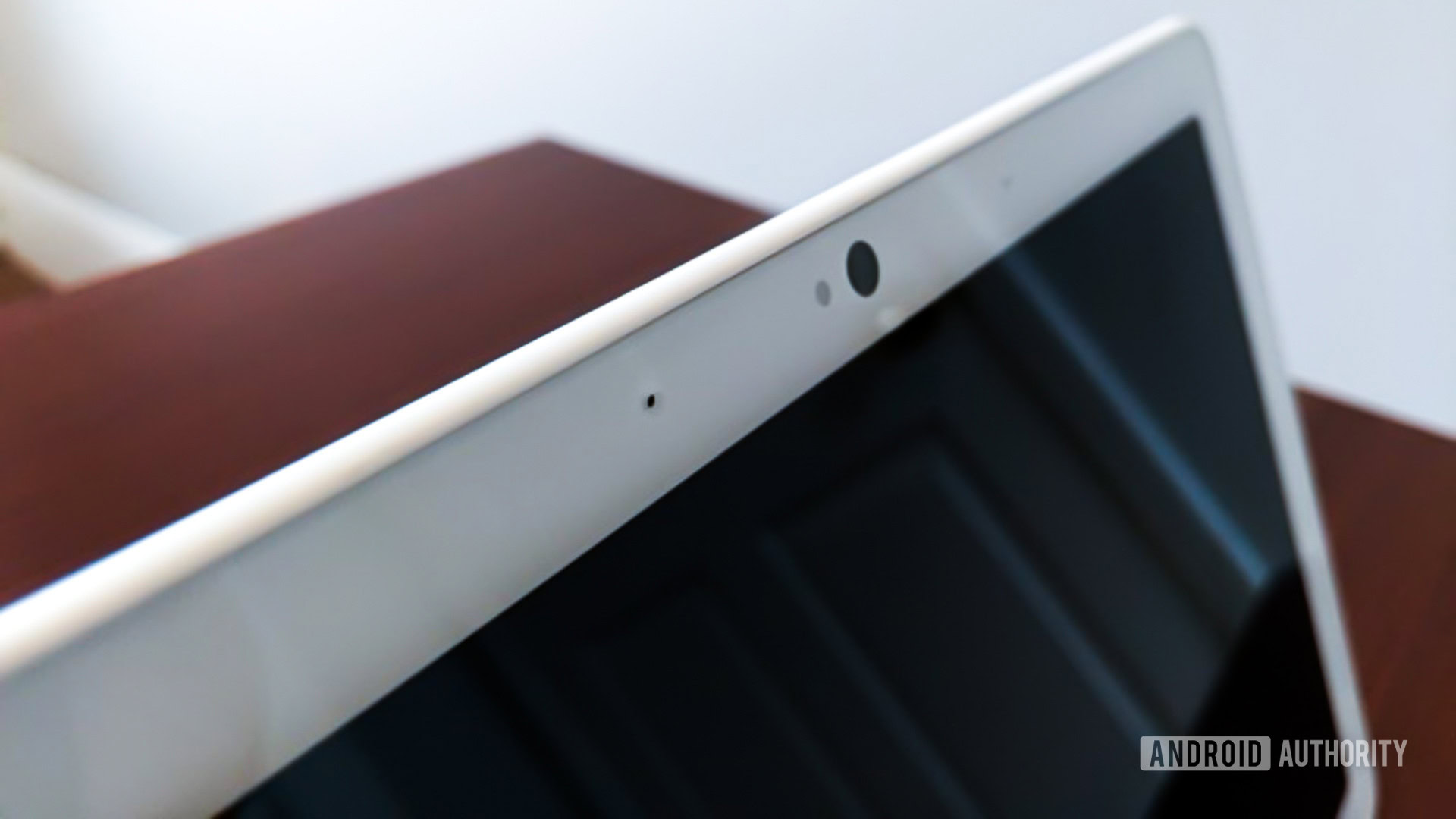
After you’ve set up the Google Nest Hub Max, you’ll be able to do basic things like view and listen to the live feed (if you have audio enabled). You can even communicate with those on the other end of the Nest Hub Max remotely, basically similar to a baby monitor. This is fine for quick check-ins, but if you want access to more advanced features, you’ll need to download the Nest app and sign up for a free account.
It’s also worth noting that Google has been gradually moving all Nest functionality from the Nest app into the Google Home app. You’ll want to download both for the best experience.
The base account offers several useful features, including taking quick clips of live footage and saving them or sending them to others via a share link. There’s also a Home/Away assistant that knows when you’re gone and can send notifications when the app detects a new face.
A smart display that's also a security camera? That's a heck of a value right there.
Of course, the central feature of any good security camera is the ability to look back at previous recordings. A free account provides this functionality in the Nest app, but some limitations exist. First, you’ll only see snapshots of activity, such as when movement was detected. You’ll also only have access to the last five days of recordings.
You’ll have to pay for a Nest Aware subscription if you want 24/7 recording, 30-day cloud storage, and other advanced features like activity zones. This isn’t exactly cheap, as the most feature-heavy plan costs $300 a year, though more affordable options cost as little as $50 a year. Thankfully, you get a 30-day trial to test the service and decide if the extras are worth it.
The Nest Cam features of the Google Nest Hub Max are pretty impressive, though there are some extra features you’ll be missing out on if you opt for this over a more expensive standalone security camera. The image quality and sound also aren’t quite as good as we’ve seen on some traditional security cameras, but it’s pretty close.
Security cameras tend to cost anywhere from $50 for a budget option to several hundred dollars, making the Hub Max’s $229 price a pretty great value considering you get a security camera and smart display in one seamless package.
A decent hub for entertainment and information
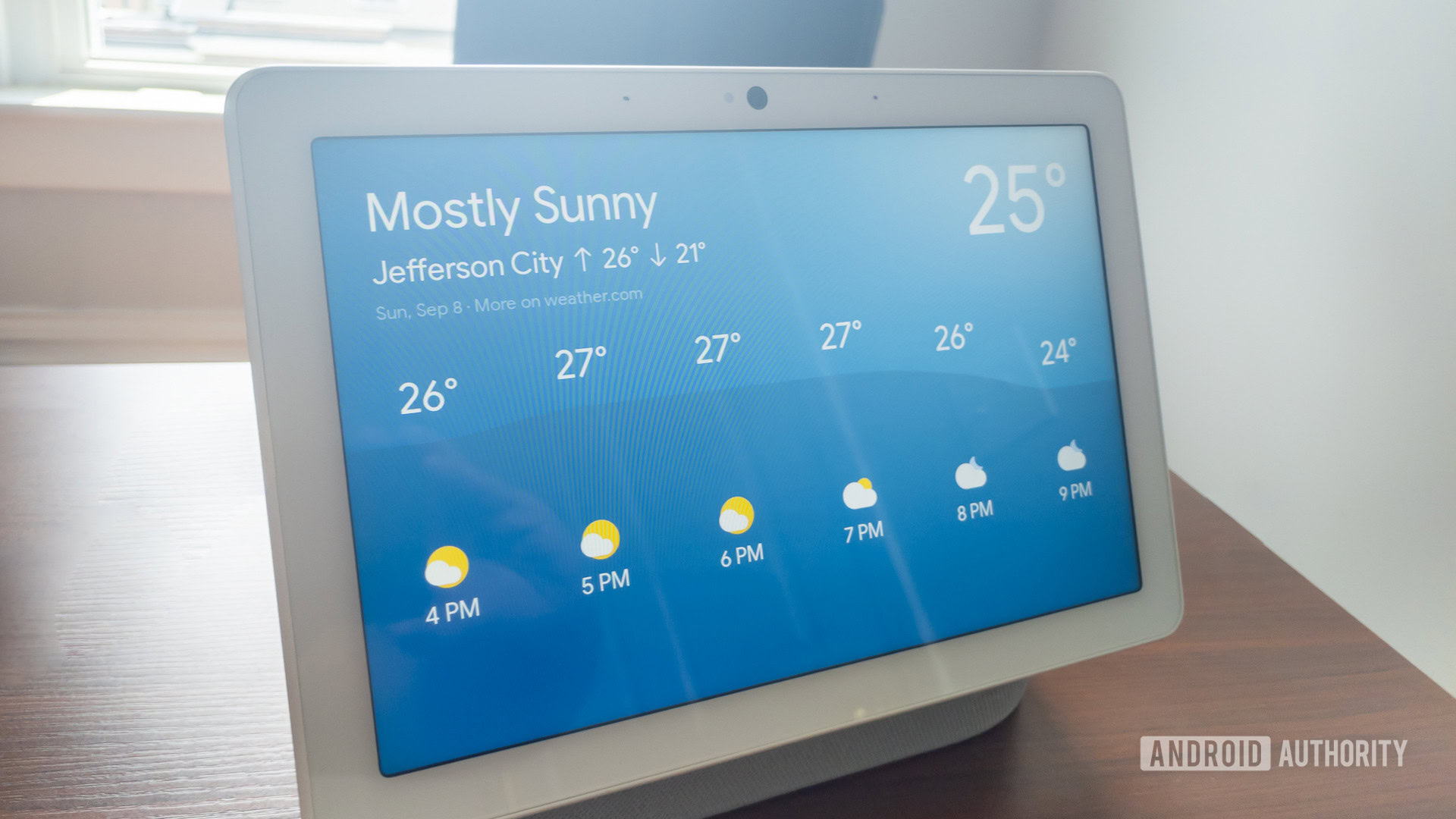
For most of this review, we focused on what’s new or improved over other Google Assistant smart displays. The Hub Max introduces several improvements, but a lot of the core functionality remains the same. That’s a good thing.
Like other smart displays, the Google Nest Hub Max can do almost everything a smart speaker can do, including setting alarms, and reminders, asking about the weather and news, or even streaming music. The addition of visual cues makes all these features even better.
The Google Nest Hub Max is the perfect hub for your digital life.
For example, listening to your favorite song on Spotify provides lyrics and other factoids. Asking about the weather brings up a nice infographic with a breakdown of upcoming hours. It even presents tabs on the bottom suggesting follow-up questions like “what about tomorrow” or “when will it start raining.”
All the third-party services you’ll find on a smart speaker work here too, but you get a few new additions such as video services like YouTube, YouTube TV, Facebook Video, Google Play Movies & TV, HBO Max, Hulu, PlayStation Vue, and Vimeo. The Nest Hub Max also now finally works with Netflix after not launching with the service.
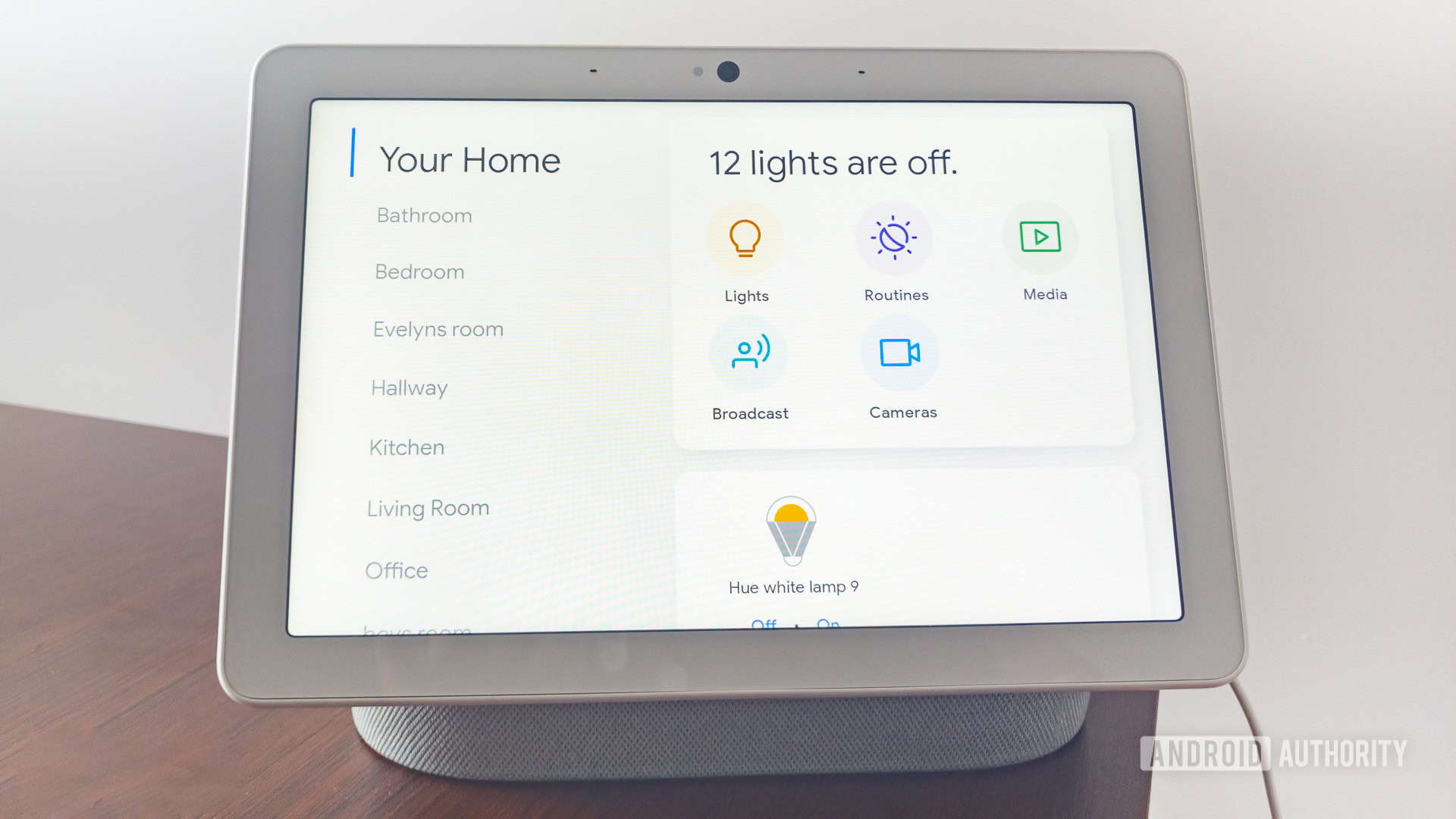
The Hub Max also makes it easy to control your smart home via the Home View feature. A swipe down on the display quickly brings up the Home View menu, letting you easily control lights and other smart devices. You can even ask it to play content on smart TVs and other compatible devices.
If you love to cook, you’ll also find the Google Nest Hub Max makes for a wonderful kitchen companion. You can ask the Hub Max for specific recipes or even browse from different categories. It’s more than just a virtual cookbook, though, as the Hub Max will take you through every step, and you can ask it to go back, repeat, or skip ahead on instructions if your hands are too occupied to interact with the touch display.
The Hub Max also makes it easy to control your smart home.
The Hub Max doubles as a digital photo frame. You can specify what you want the display to focus on showing, such as recent trips or just pictures of friends and family. Once you’ve set up this feature, it will automatically pull in and update photos from your Google Photos library.
Bottom line, the Hub Max adds several features you can’t find on a smart speaker. Plus, having a touch display means you don’t need to shout at your smart display nearly as much as you do with Google Home.
Google Nest Hub Max review: The verdict
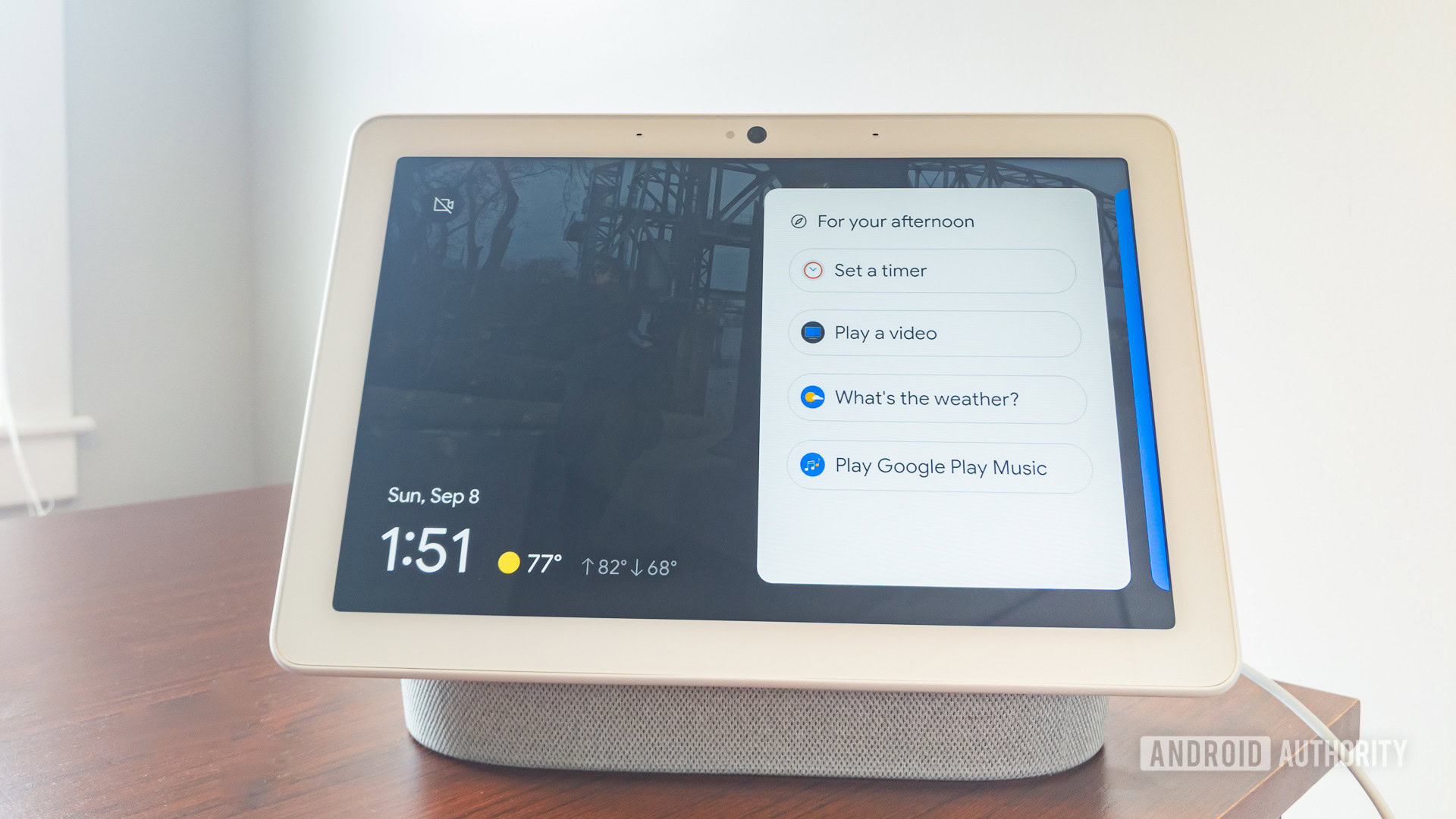
Is the Google Nest Hub Max worth it in 2024? Yes and no. The Max gives you get great sound, a large display, and many features you won’t find with the competition. If you don’t care about the Nest Cam features or video calls, save some money and go for the Google Nest Hub ($99.99 at Best Buy) while enjoying the addition of sleep tracking (something Max doesn’t have).
There’s also another Google alternative to consider. Although not a through-and-through smart display, the Google Pixel Tablet ($499 at Amazon) melds the advantages of a 10.9-inch portable slate with a dock that transforms the device into a smart screen.
At $499, it’s a great deal for two devices in one, especially if you find the traditional smart screen concept of the Nest Hub Max too limiting. However, the Pixel Tablet is only available in a few markets, so finding one could be challenging. It’s also considerably more expensive, though we gave it reasonably high marks in our Pixel Tablet review. It is also worth mentioning a new Nest Hub Max model was spotted in a the Google Home app after diving deeper into the APK, so it’s possible we could see a new model in the not too distant future.
Outside of Camp Google, the competition is catching up. Amazon has since launched updated versions of the Echo Show 5 ($89.99 at Amazon) and Echo Show 10 ($264 at Amazon). There’s also rumors that Apple is getting ready to release a smart display of its own sometime in 2025.


Top Google Nest Hub Max questions and answers
The Google Nest Hub Max allows you to set an alarm, play your favorite songs, check the weather, and much more via Google Assistant. You can also use it to make video calls with Google Duo. Additionally, the device doubles as a Nest Cam, which is something that sets the Google Nest Hub Max apart from the competition.
The Google Nest Hub Max is worth it, as we think it’s one of the best smart displays on the market. However, if you don’t care about the Nest Cam features, you may want to consider the cheaper Google Nest Hub (2nd generation).
No, you can’t install third-party apps on the Google Nest Hub Max.
Unlike the Google Nest Hub, the Google Nest Hub Max has an integrated camera.
Yes, you can stream shows and movies from Netflix and other streaming services on the Google Nest Hub Max.
Yes, you’ll find the browser on the Google Nest Hub Max that allows you to browse the web.
Although it’s been around for a few years now, the Google Nest Hub Max has not been discontinued. You can still buy it from Google, Best Buy, and many other retailers.
The Google Nest Hub Max has a larger display (10-inch vs 7-inch) compared to the Nest Hub, supports video calls, and features a built-in Nest Cam. Check out our full comparison for more.